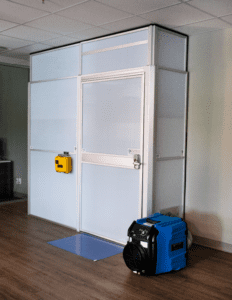Cleanroom Classifications: Understanding the Importance of ISO Standards
Cleanrooms are highly controlled environments designed to minimize contamination and maintain specific levels of cleanliness to ensure the quality and safety of products or processes. These environments are essential in industries such as pharmaceuticals, electronics manufacturing, biotechnology, and aerospace, where even tiny particles can have a significant impact.
Cleanrooms come in various classes, each with its specific cleanliness requirements, and these classes are determined by the International Organization for Standardization (ISO). In this blog, we will explore the significance of cleanroom classifications and dive into ISO standards to understand the various cleanroom classes and their importance.
Why Do Cleanrooms Need Classifications?
Cleanrooms are crucial for industries where strict control of airborne particles, temperature, humidity, and other environmental factors is necessary to maintain product quality and safety. In these controlled environments, even the smallest contaminants like dust, microbes, or chemicals can lead to product defects, safety hazards, or compromised research outcomes.
To effectively manage and maintain the cleanliness of cleanrooms, these environments are classified into different classes based on the permissible levels of airborne particles within them. These classifications help standardize cleanroom design, construction, and operation, ensuring that they meet the specific requirements of the industry and the processes carried out within them.
What Is ISO?
The International Organization for Standardization, known as ISO, is an independent, non-governmental international organization that develops and publishes international standards. ISO standards cover a wide range of industries, and they provide guidelines and specifications for various aspects of products, services, and systems to ensure quality, safety, and efficiency. In the context of cleanrooms, ISO has established standards that help define cleanroom classes and their respective cleanliness levels.
ISO Standards
ISO 14644 is the primary standard for cleanroom classification and management. Similar to ICRA barriers for hospitals, this standard provides a detailed framework for cleanroom design, operation, and monitoring. It sets the parameters for the maximum allowable levels of airborne particulate contamination for various cleanroom classes.
What Are All the Different ISO Classes?
ISO 14644-1 defines nine different cleanroom classes, ranging from ISO 1 to ISO 9. These classes are based on the maximum allowable concentration of airborne particles within each cubic meter of air. The lower the ISO class number, the cleaner the cleanroom. Here’s a breakdown of the ISO cleanroom classes:
1. ISO 1: The cleanest environment with the lowest allowable particle count, suitable for critical applications like semiconductor manufacturing and aerospace.
2. ISO 2: Extremely clean environment, commonly used in semiconductor and nanotechnology research.
3. ISO 3: Suitable for pharmaceutical and biotechnology manufacturing.
4. ISO 4: Found in pharmaceutical production and advanced optics manufacturing.
5. ISO 5: Common in electronics assembly and pharmaceutical compounding.
6. ISO 6: Used in industries like medical device manufacturing.
7. ISO 7: Suitable for packaging and sterile compounding.
8. ISO 8: Typically used in non-critical cleanroom applications.
9. ISO 9: The least clean environment, comparable to typical office or residential spaces.
Why Are the Ratings Important?
Cleanroom ratings are crucial for several reasons:
1. Product Quality: Maintaining the appropriate cleanliness level ensures the quality of the products being manufactured or processed within the cleanroom. In industries like pharmaceuticals and electronics manufacturing, even a small particle can lead to product defects.
2. Safety: Cleanroom classifications are vital in industries where safety is paramount. For instance, in the aerospace sector, the tiniest contamination can lead to catastrophic failures, so adhering to the appropriate cleanroom class is essential for safety.
3. Regulatory Compliance: Many industries are subject to strict regulatory guidelines. Adhering to ISO standards not only helps meet these requirements but also demonstrates a commitment to quality and safety.
4. Research Accuracy: In research and development, maintaining the right cleanroom class is essential to ensure the accuracy of experiments and tests. For example, in biotechnology research, any contamination can compromise the validity of results.
5. Cost Reduction: Cleanrooms are expensive to build and maintain. By accurately classifying and designing cleanrooms, organizations can optimize their investments, ensuring they meet the necessary requirements without overinvesting in unnecessary cleanliness levels.
6. Process Control: In manufacturing, cleanroom classifications help control and monitor processes. For example, semiconductor manufacturing requires ISO Class 1 and 2 cleanrooms to avoid defects in microchips.
Critical Importance
In conclusion, cleanroom classifications are essential for industries where cleanliness and environmental control are critical. ISO standards, particularly ISO 14644, provide a universally recognized framework for cleanroom design and operation, with different cleanroom classes catering to the specific needs of various industries.
These classifications not only ensure the quality, safety, and accuracy of processes but also help organizations comply with regulatory requirements and manage costs effectively. Cleanrooms, with their carefully defined cleanliness levels, continue to be the backbone of industries that demand precision, quality, and safety.
If you’re a facilities manager and you’re looking to renovate your space. Check out our checklist to help you plan the most cost effective and solution oriented project plan.


